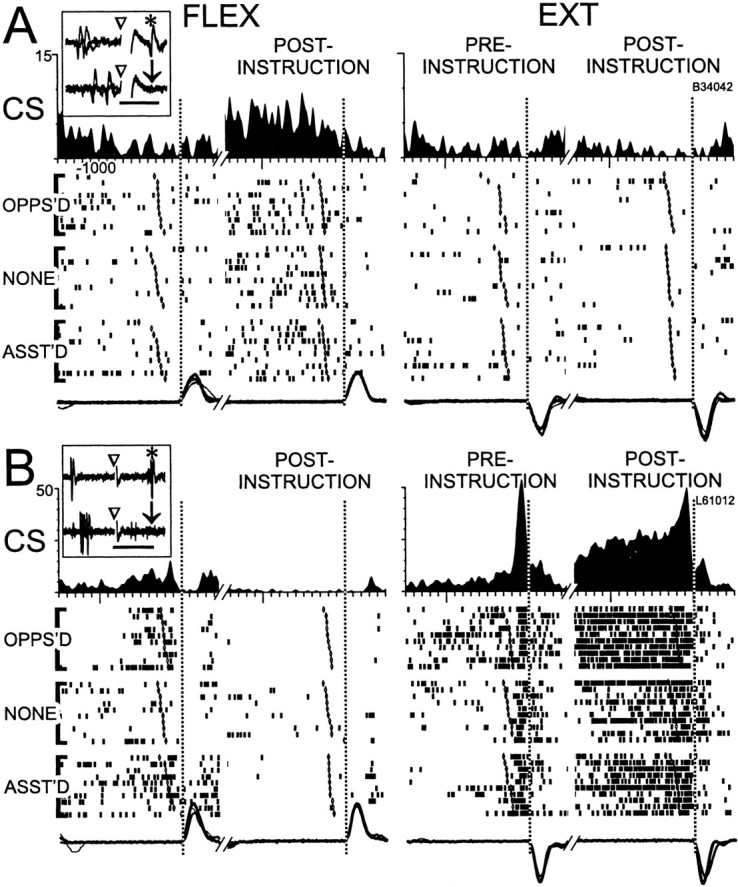Fig. 11.

Examples of “preparatory alone” and “combined” categories of preparatory activity. A, Preparatory activity in the absence of perimovement firing, like that shown in this example, was more common in CSNs than in CPNs. Tonic firing during the postinstruction period was increased for flexion trials (left) but was absent for extension trials (right). There was no change in firing related to the first or second movement (left and right vertical dotted lines) for either flexion or extension trials.B, A combination of preparatory and movement-related activity was observed in CSNs, as illustrated here. Aand B show two separate epochs of unit activity (SDFs and raster diagrams) and mean velocity traces for flexion (left) and extension (right) trials. The first epoch includes the preinstruction and first movement periods, whereas the second epoch includes postinstruction and second movement periods. The SDFs reflect mean firing rates across the three loading conditions, whereas separate raster diagrams and velocity traces (overlaid below) are shown for each loading condition. In other respects, the conventions of previous figures are followed. Time scales for inset figures: A, 4 msec;B, 15 msec.
